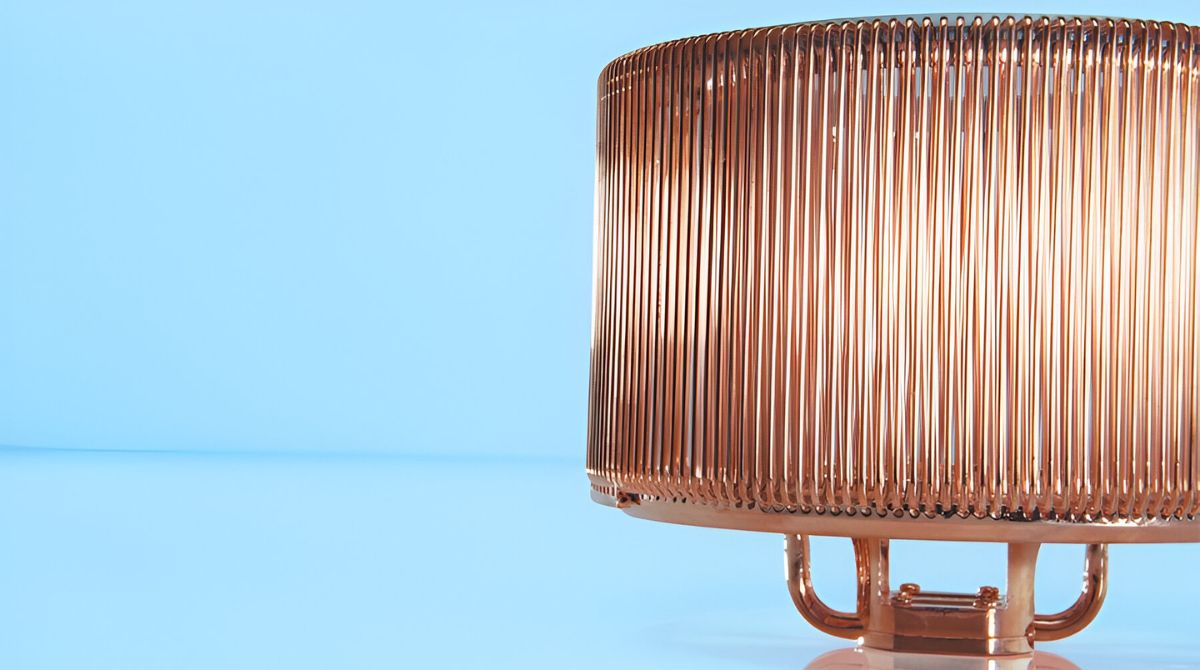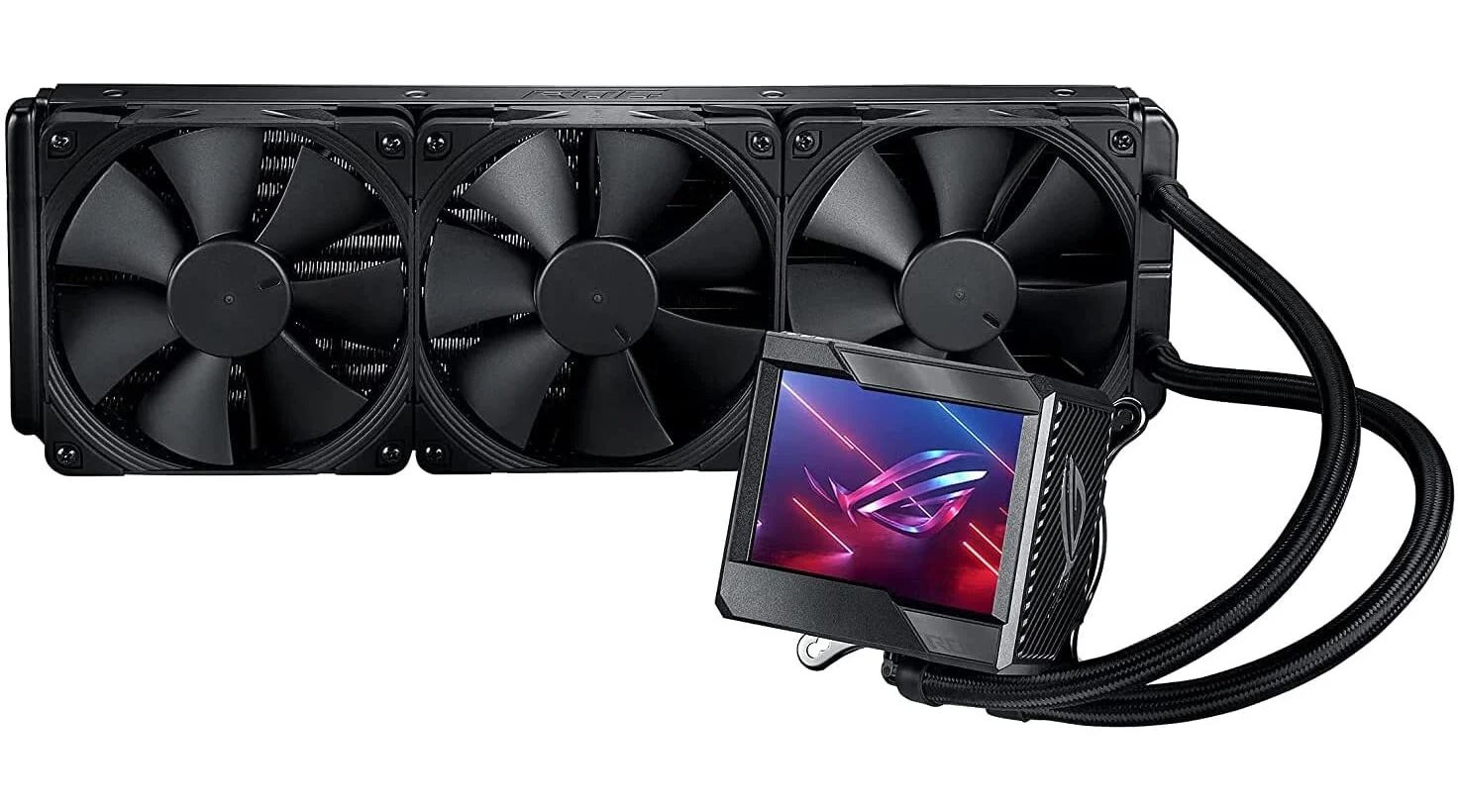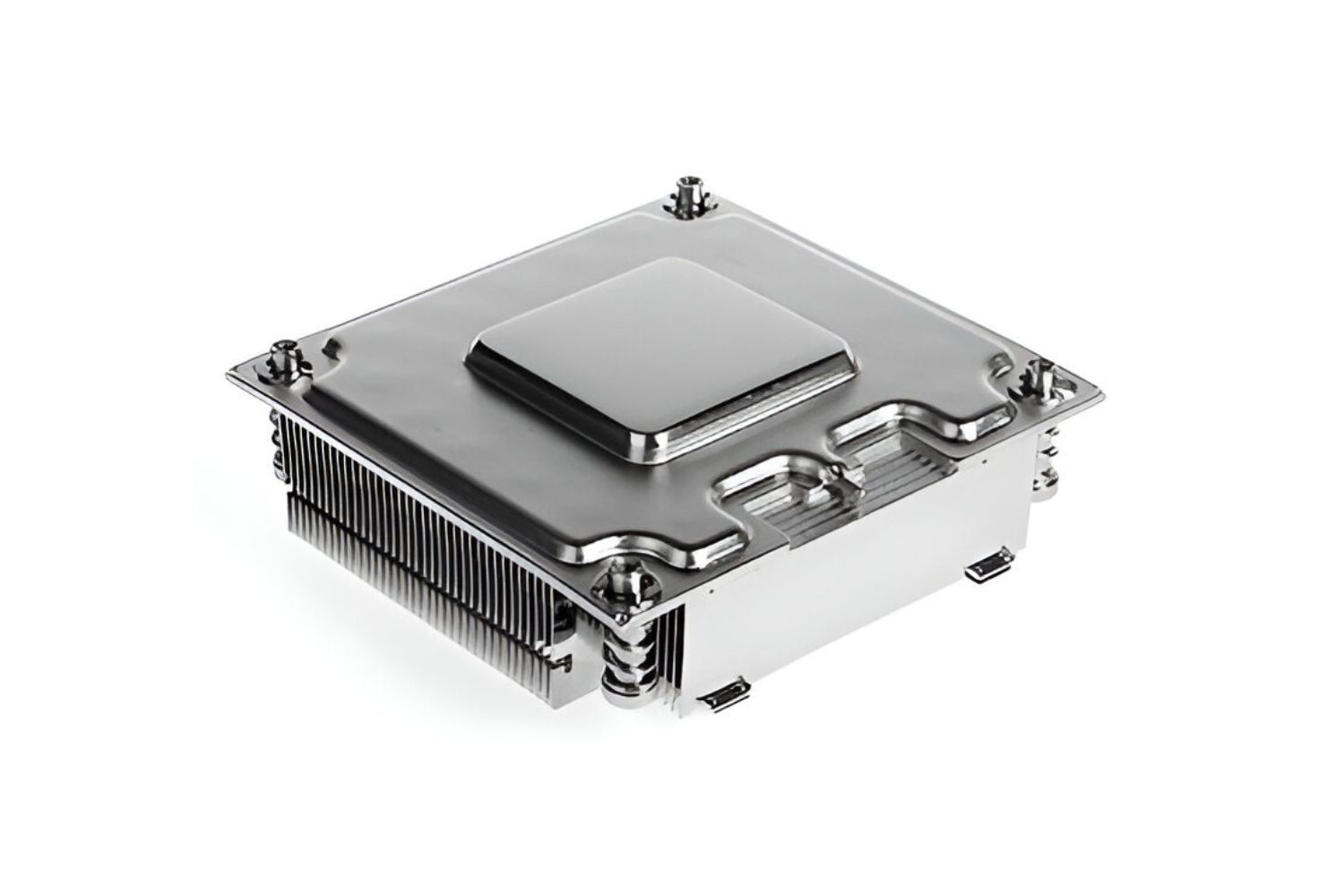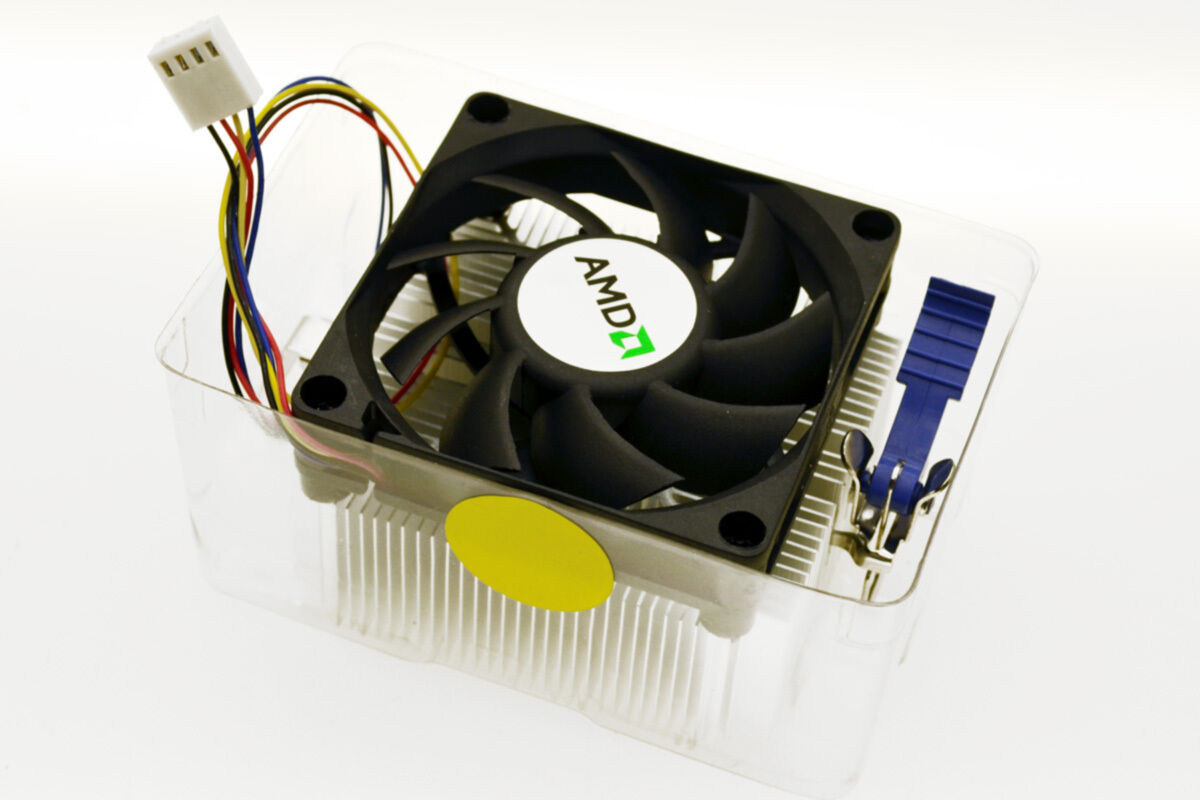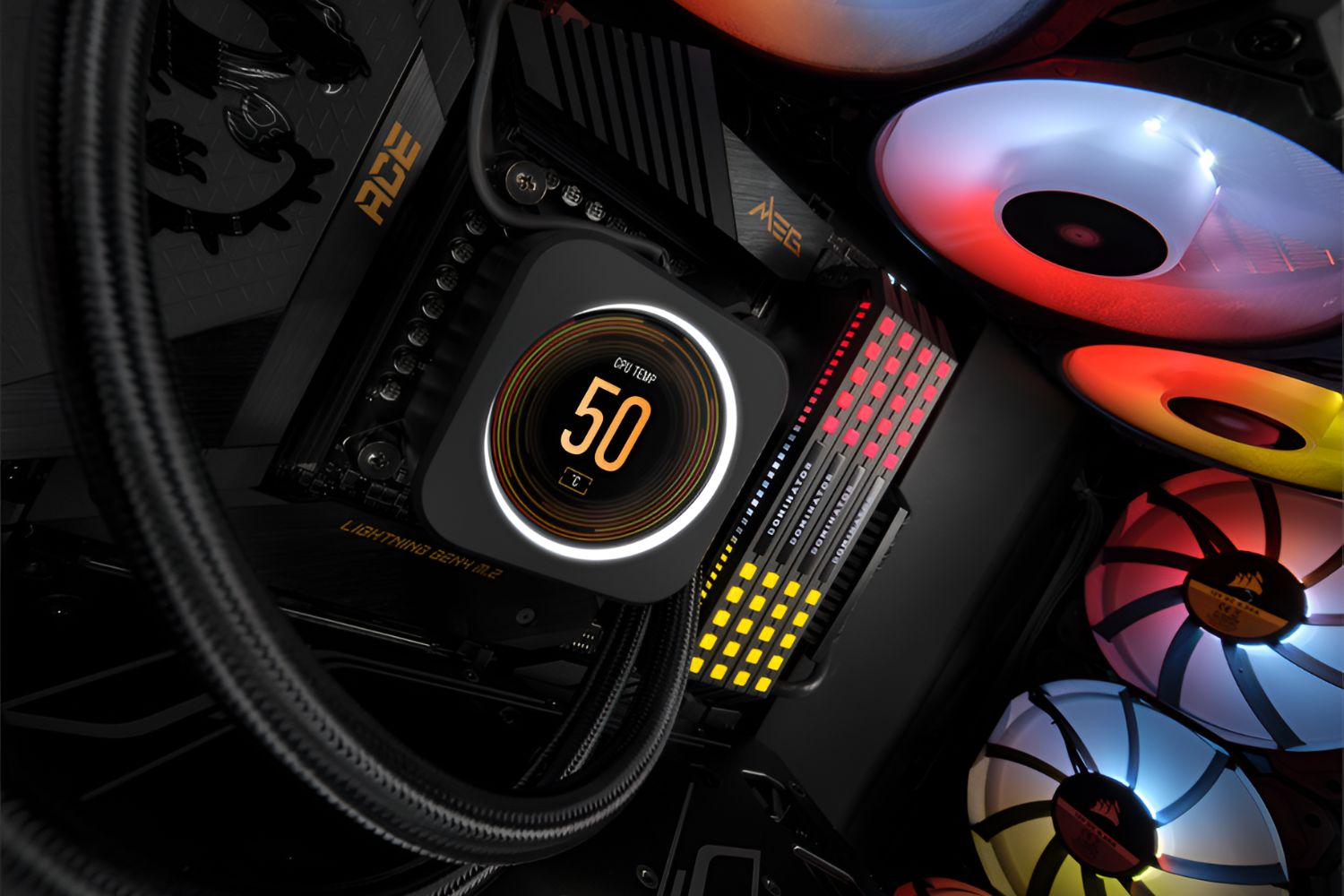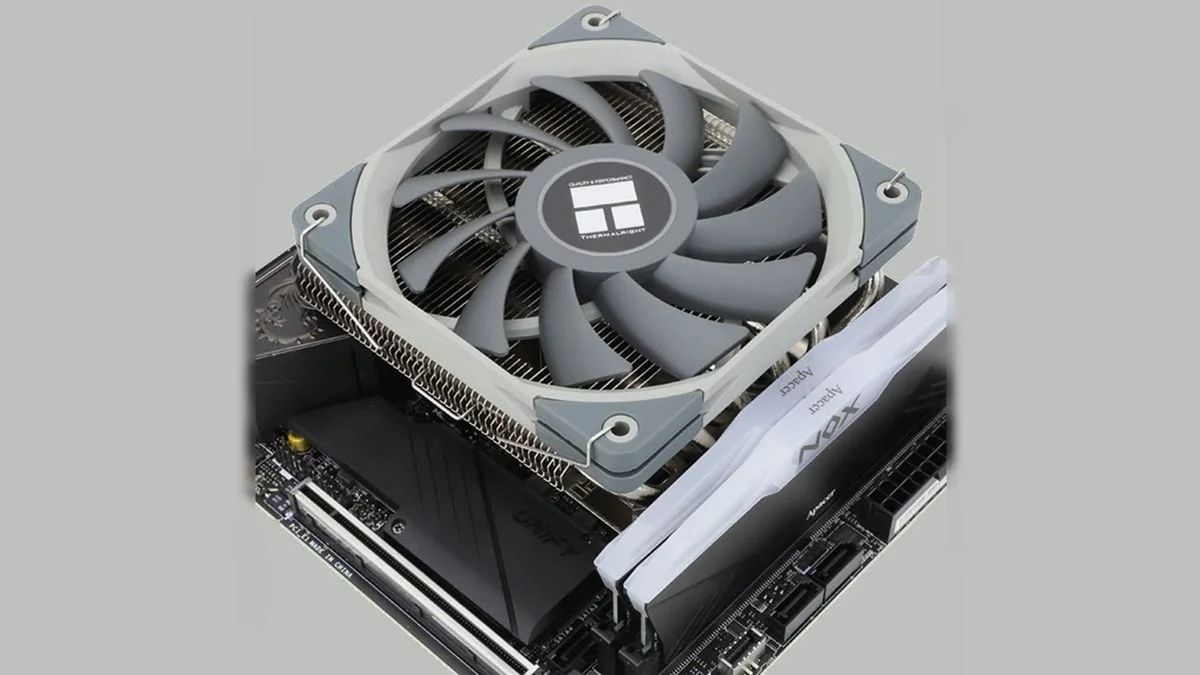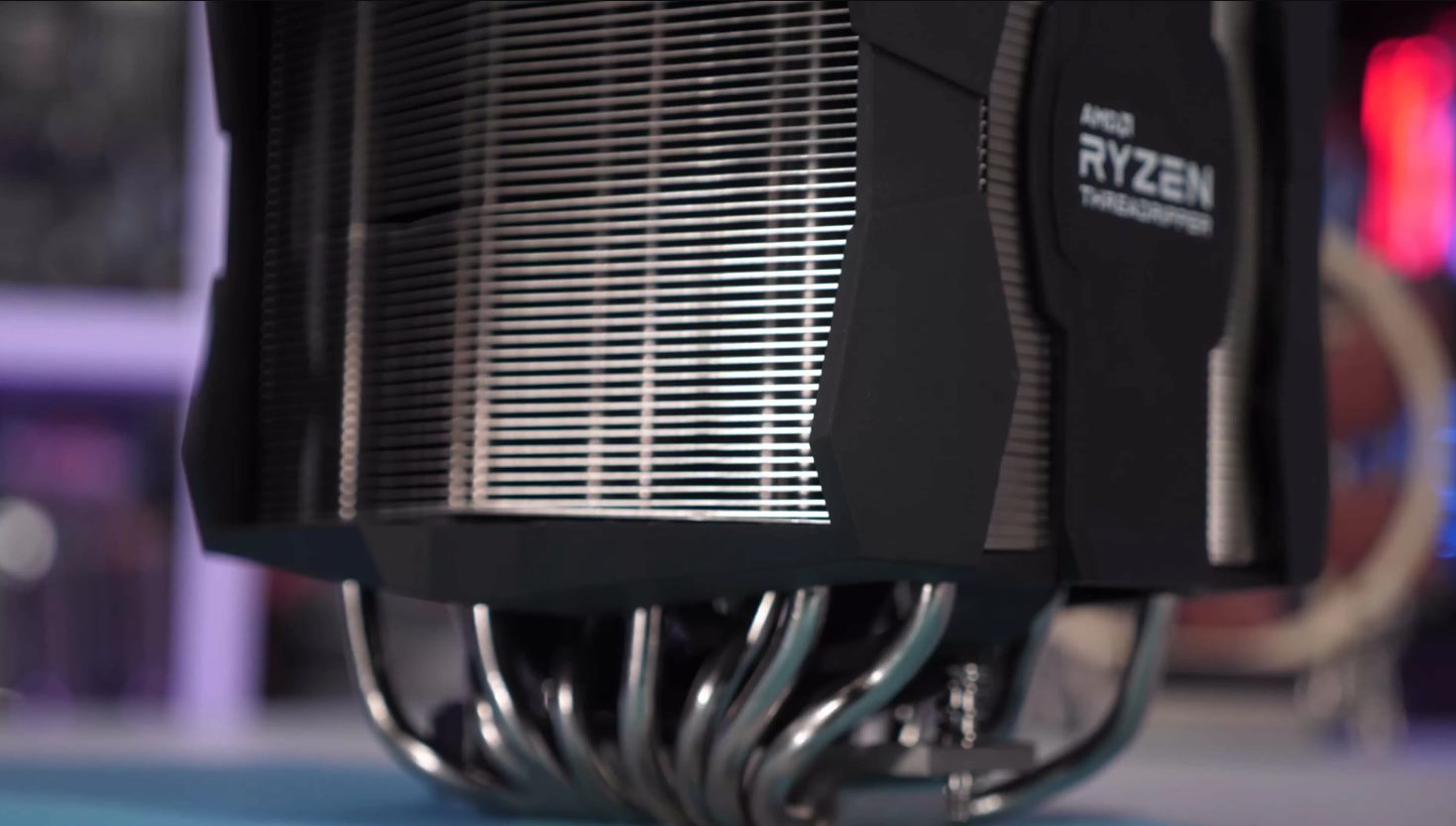Introduction
In the world of computer hardware, keeping your CPU cool is essential for optimal performance and longevity. Overheating can lead to system instability, decreased processing speed, and potential damage to your CPU. That’s where CPU coolers come in.
A CPU cooler is a device that helps dissipate heat generated by your processor, ensuring it operates within safe temperature limits. With a wide variety of options available, it can be daunting to choose the best cooler for your needs. In this article, we will explore the different types of CPU coolers and help you determine which one is best suited to keep your processor cool.
When it comes to CPU coolers, there are two main categories: air coolers and liquid coolers. Air coolers use a combination of heatsinks and fans to dissipate heat, while liquid coolers employ a liquid coolant to transfer heat away from the CPU. Each type has its advantages and considerations, so let’s delve into them.
Note: Before we commence, it’s essential to mention that the choice of a CPU cooler depends on various factors such as your processor’s thermal requirements, case compatibility, and personal preferences. It’s crucial to research and consult product specifications and user reviews before making your final decision.
Air CPU Coolers
Air CPU coolers are the most common and affordable cooling solution for most computer systems. They employ a combination of heatsinks and fans to dissipate heat generated by the CPU. Here are some popular types of air coolers:
- Stock Cooler: This is the cooler that comes bundled with your CPU. Stock coolers are generally basic and designed to handle the thermal needs of your CPU under normal operating conditions. While they are adequate for everyday tasks, they may struggle to cool your CPU during intense gaming or heavy rendering sessions.
- Tower Coolers: Tower coolers are the most commonly used air coolers. They feature a tall heatsink with multiple heat pipes, which direct the heat away from the CPU. A fan mounted on top of the heatsink assists in heat dissipation. Tower coolers provide excellent cooling performance and often offer low noise levels. They come in various sizes to accommodate different case clearances.
- Low-profile Coolers: Low-profile coolers are designed for small form factor (SFF) or slim cases. They have a compact height to fit in tight spaces while still providing adequate cooling. These coolers are not as efficient as tower coolers due to their size restrictions, but they are a reliable choice for compact builds where space is a constraint.
- Top-Flow Coolers: Top-flow coolers, also known as downdraft coolers, have a unique design where the heatsink and fan are positioned horizontally. The fan blows air downwards onto the heatsink, allowing hot air to be expelled from the sides of the cooler. Top-flow coolers are advantageous for cooling other motherboard components as well, such as VRM modules and RAM modules.
Air CPU coolers are known for their reliability, ease of installation, and cost-effectiveness. They offer effective cooling performance for most everyday computing tasks. However, if you engage in intense gaming or run demanding applications that create significant heat, you may want to consider liquid cooling options for better thermal management.
Stock Cooler
The stock cooler, also known as the default cooler, is the cooling solution that comes bundled with your CPU purchase. It is provided by the CPU manufacturer and is designed to meet the thermal needs of the processor under normal operating conditions.
Stock coolers are typically made from aluminum or copper and feature a small heatsink with a fan mounted on top. They are designed to provide adequate cooling for the CPU without any overclocking or heavy loads.
One advantage of using a stock cooler is that it is included with your CPU, so you don’t have to purchase an additional cooler separately. This can be a cost-saving option, especially for budget-conscious users or those who don’t engage in heavy computing tasks.
However, stock coolers tend to have limited cooling capabilities compared to aftermarket coolers. They often have smaller fan sizes and lower RPMs, resulting in less effective heat dissipation. This can lead to higher CPU temperatures during intense gaming or CPU-intensive tasks.
Additionally, stock coolers are generally not very quiet. The small fans used in stock coolers can produce higher noise levels when operating at higher RPMs. This can be a concern for users who value a quiet computing experience.
It’s important to note that the cooling capacity of stock coolers can vary depending on the specific CPU model. High-end processors may come with more efficient stock coolers compared to lower-end or entry-level CPUs.
If you have modest cooling needs and don’t plan on overclocking your CPU or engaging in demanding tasks, the stock cooler may be sufficient. However, if you want better cooling performance and a quieter system, upgrading to an aftermarket cooler is recommended.
Tower Coolers
Tower coolers are a popular type of air CPU cooler known for their excellent cooling performance and versatility. They are named “tower” coolers due to their tall, vertical heatsink design.
At the heart of a tower cooler is a large heatsink made up of aluminum or copper fins. These fins allow for efficient heat dissipation from the CPU. The heatsink is connected to the CPU through copper heat pipes, which help transport the heat away from the processor.
Tower coolers come in various sizes and configurations to accommodate different needs and case clearances. They range from compact coolers that fit in low-profile cases to larger coolers suitable for high-performance systems.
One of the main advantages of tower coolers is their excellent cooling performance. The large surface area of the heatsink and multiple heat pipes allow for efficient heat transfer, resulting in lower CPU temperatures. This is especially beneficial for users who engage in heavy gaming or CPU-intensive tasks.
In addition to performance, tower coolers often offer low noise levels. Many manufacturers incorporate quiet fans with low RPMs and noise dampening features to ensure a peaceful computing experience.
The installation process for tower coolers may require a bit of effort, as they are larger and bulkier than other types of coolers. However, most tower coolers come with detailed instructions and mounting hardware for easy installation.
It’s important to consider the dimensions of a tower cooler and the clearance inside your computer case. Tower coolers with larger heatsinks may not fit in compact cases with limited space. Therefore, before purchasing a tower cooler, make sure to check your case’s specifications and ensure compatibility.
Overall, tower coolers are a popular choice among enthusiasts and gamers due to their exceptional cooling performance, low noise levels, and versatility. They offer an excellent balance between price, performance, and ease of installation, making them a reliable choice for most users.
Low-profile Coolers
Low-profile coolers are specifically designed for systems with limited space, such as small form factor (SFF) or slim cases. These coolers have a compact height, allowing them to fit in tight spaces while still providing adequate cooling for the CPU.
Unlike tower coolers, low-profile coolers utilize a horizontally-oriented design with a smaller heatsink and fan. This design allows for efficient heat dissipation while maintaining a lower profile.
One of the key considerations when using a low-profile cooler is its thermal capacity. Due to their smaller size, low-profile coolers may not have the same cooling capabilities as larger tower coolers or liquid coolers. Therefore, they are more suitable for CPUs with lower thermal requirements or for casual computing tasks.
However, that doesn’t mean low-profile coolers compromise on performance. Many manufacturers have designed low-profile coolers with innovative heat pipe and fin arrangements, as well as high-quality fans, to maximize cooling efficiency within a small form factor.
Another advantage of low-profile coolers is their compatibility with a wide range of cases. They are specifically engineered to fit in compact cases, ensuring that heat-sensitive components, such as the CPU, remain cool even in space-constrained environments.
Installation of low-profile coolers is generally straightforward, with many coolers offering multi-platform compatibility and user-friendly mounting mechanisms.
It’s important to note that low-profile coolers may have higher noise levels compared to larger coolers. Due to the restricted space available for the fan, low-profile coolers may need to operate at higher RPMs to achieve effective heat dissipation. However, many manufacturers focus on noise reduction, incorporating quiet fans and advanced noise dampening technologies.
If you have a small form factor case or want to build a compact system without compromising on cooling performance, a low-profile cooler is an ideal choice. They provide efficient cooling within limited space, making them a reliable option for HTPCs (Home Theater PCs), small gaming rigs, or any build where space is a constraint.
Top-Flow Coolers
Top-flow coolers, also known as downdraft coolers, have a unique design that sets them apart from other air CPU coolers. Instead of the traditional vertical tower design, top-flow coolers have a horizontal orientation, with the heatsink and fan positioned on top.
The primary advantage of top-flow coolers is their ability to cool not only the CPU but also other components on the motherboard, such as the voltage regulator modules (VRMs) and random access memory (RAM) modules. The fan blows air downwards onto the heatsink, allowing hot air to be expelled through the sides of the cooler. This helps in maintaining lower temperatures for both the CPU and surrounding components.
Top-flow coolers are especially beneficial for systems with limited airflow, such as small form factor cases or builds with components positioned closely together. By directing airflow across multiple components, top-flow coolers contribute to overall system stability and longevity.
Another advantage of top-flow coolers is their low-profile design. They are typically shorter in height compared to tower coolers, making them compatible with cases that have limited vertical clearance.
However, it’s important to note that top-flow coolers may not provide the same level of cooling performance as larger tower coolers. The horizontal orientation and compact size can limit the amount of heat that can be dissipated. As a result, top-flow coolers are more suitable for CPUs with average thermal requirements or for moderate computing tasks.
When it comes to installation, top-flow coolers generally offer ease of use and compatibility with most mainstream CPU sockets. They often come with universal mounting brackets and instructions for straightforward installation.
One consideration with top-flow coolers is their limited compatibility with high-profile RAM modules. Due to their orientation and positioning, top-flow coolers may interfere with taller RAM heatspreaders. It’s essential to check the cooler’s specifications and your RAM module’s dimensions to ensure compatibility.
Overall, top-flow coolers are a reliable choice for users seeking a cooling solution that not only cools the CPU but also helps maintain lower temperatures for other motherboard components. They are especially well-suited for small form factor builds or systems with limited airflow, providing efficient cooling and contributing to overall system stability.
AIO Liquid Coolers
AIO (All-in-One) liquid coolers are a popular alternative to air coolers, offering efficient cooling performance without the complexity of custom liquid cooling solutions. AIO liquid coolers consist of a pre-filled loop that includes a pump, radiator, tubing, and a CPU block with a built-in water block.
Unlike air coolers, which rely on the combination of heatsinks and fans, AIO liquid coolers utilize the principle of liquid cooling to dissipate heat from the CPU. The CPU block is attached to the processor, and through the circulation of coolant, heat is transferred from the CPU to the radiator, where it is dissipated by the fans.
One of the primary advantages of AIO liquid coolers is their superior cooling performance. The use of liquid enables efficient heat transfer, resulting in lower CPU temperatures compared to air coolers. This is especially beneficial for overclocking or running high-performance CPUs that generate significant amounts of heat.
Another benefit of AIO liquid coolers is their compact design. The radiator can be mounted in various configurations, either on top or at the front of the case, allowing for flexibility in case compatibility and component placement. This makes AIO liquid coolers suitable for both mid-tower and smaller form factor cases.
Furthermore, AIO liquid coolers often offer quieter operation compared to high-performance air coolers. The use of larger fans and the absence of direct contact between the CPU block and the fan result in reduced noise levels during operation.
Installing an AIO liquid cooler requires careful consideration of case compatibility and sufficient space for radiator and fan installation. Most AIO liquid coolers come with comprehensive installation instructions and are designed to be user-friendly, making the installation process relatively straightforward.
However, it’s worth mentioning that AIO liquid coolers can be more expensive than air coolers, particularly for high-end models. Additionally, the pre-filled nature of AIO liquid coolers means they require minimal maintenance, but they may have a limited lifespan compared to custom liquid cooling solutions.
Overall, AIO liquid coolers offer excellent cooling performance, flexibility in case compatibility, and quieter operation compared to air coolers. They are an ideal choice for users who prioritize efficient cooling, especially for high-performance systems or those looking for a sleek and clean aesthetic without the complexity of custom liquid cooling setups.
Smaller AIO Liquid Coolers
Smaller AIO liquid coolers are a subset of AIO liquid coolers that are designed specifically for compact cases or systems with limited space. These coolers offer the benefits of liquid cooling in a more compact form factor, making them ideal for small form factor (SFF) builds or mini-ITX systems.
Smaller AIO liquid coolers typically have a smaller radiator size, ranging from 120mm to 240mm, allowing them to fit comfortably in compact cases. The reduced radiator size is compensated by higher fan RPMs to maintain efficient heat dissipation despite the limited surface area.
One of the primary advantages of smaller AIO liquid coolers is their ability to offer liquid cooling benefits in compact systems. They provide better cooling performance compared to smaller air coolers, which may struggle to dissipate heat effectively in confined spaces.
Additionally, smaller AIO liquid coolers offer flexibility in terms of installation. The compact size of the radiator allows for different mounting positions, such as top-mounting or front-mounting, depending on the case layout and cooling requirements.
An important consideration when using smaller AIO liquid coolers is their compatibility with different case sizes and layouts. Before purchasing, it’s crucial to check the case specifications and ensure that there is sufficient clearance for radiator installation and fan placement.
Smaller AIO liquid coolers often feature user-friendly installation processes. They typically come with comprehensive instructions and mounting kits that cater to various CPU socket types. However, it’s important to follow the manufacturer’s guidelines and recommendations to ensure a secure and effective installation.
Compared to larger AIO liquid coolers, smaller AIO liquid coolers may have slightly reduced cooling performance due to the trade-off between radiator size and fan RPM. This means they may not be the ideal choice for heavily overclocked systems or high-end CPUs that generate a significant amount of heat.
Overall, smaller AIO liquid coolers provide an excellent cooling solution for users who want the performance benefits of liquid cooling in a compact form factor. They offer efficient heat dissipation, flexibility in installation, and are well-suited for small form factor builds or systems where space is a constraint.
Large AIO Liquid Coolers
Large AIO (All-in-One) liquid coolers are designed to provide exceptional cooling performance for high-end, overclocked, or extremely power-hungry CPUs. These coolers offer a larger radiator size and more robust cooling capabilities compared to smaller AIO liquid coolers.
The primary advantage of large AIO liquid coolers is their ability to effectively dissipate a significant amount of heat generated by high-performance CPUs. The larger radiator size, ranging from 240mm to 360mm or even larger, allows for greater heat dissipation, resulting in lower CPU temperatures and improved thermal management.
Large AIO liquid coolers often come equipped with multiple fans, typically two or three, that provide enhanced airflow and cooling performance. These fans are usually larger in size and operate at lower RPMs, allowing for efficient heat dissipation while maintaining quieter operation compared to smaller AIO liquid coolers.
Another benefit of large AIO liquid coolers is their versatility in terms of compatibility with different cases and setups. The larger radiator size may require more space, particularly in terms of clearance for installation. It’s crucial to ensure that the case and motherboard can accommodate the radiator size and fan placement before considering a large AIO liquid cooler.
Installation of large AIO liquid coolers may vary depending on the specific model and mounting mechanism. Most manufacturers provide detailed instructions and mounting kits to assist with the installation process. It’s important to follow the manufacturer’s guidelines to ensure a secure and effective installation.
One consideration with large AIO liquid coolers is their impact on aesthetics and system design. The larger radiators and multiple fans may require careful planning for cable management and airflow optimization. However, many large AIO liquid coolers come with aesthetically pleasing designs, including customizable RGB lighting, to enhance the overall visual appeal of the system.
Due to their enhanced cooling performance and larger size, large AIO liquid coolers tend to be more expensive compared to smaller AIO liquid coolers or air coolers. However, if you have a high-performance system that demands efficient cooling or if you plan on overclocking your CPU to its maximum potential, a large AIO liquid cooler is a worthy investment.
Overall, large AIO liquid coolers offer exceptional cooling performance, versatility, and improved thermal management for high-end systems and demanding computing tasks. They are the ideal choice for enthusiasts, gamers, and users seeking the ultimate cooling solution for their powerful CPUs.
Custom Loop Liquid Cooling
Custom loop liquid cooling is the pinnacle of cooling performance for computer systems. Unlike AIO (All-in-One) liquid coolers, which come pre-assembled and ready for installation, custom loop liquid cooling involves building a cooling system from individual components, including a pump, reservoir, radiator, water blocks, tubing, and fittings.
The main advantage of custom loop liquid cooling is the ability to tailor the cooling solution to your specific needs. With a custom loop, you have more control over the selection and placement of components, allowing for precise cooling of not only the CPU but also the GPU, RAM, and other components.
Custom loop liquid cooling systems offer superior cooling performance due to the use of larger radiators, multiple fans, and high-quality water blocks. The larger radiator surface area and increased water volume result in better heat dissipation, which can handle extreme overclocking or power-hungry components.
Another advantage of custom loop liquid cooling is the potential for reduced noise levels. The larger radiators and slower fan speeds associated with custom loops provide better cooling with minimal noise output, resulting in a quieter computing experience.
When it comes to aesthetics, custom loop liquid cooling solutions offer unparalleled customization and visual appeal. Users have the freedom to choose the color of the coolant, add RGB lighting, and design an intricate tubing layout, making it a popular choice for users who value a visually striking and personalized PC build.
However, it’s important to note that custom loop liquid cooling requires more expertise and effort in terms of installation and maintenance. Building a custom loop requires careful planning, knowledge of PC components, and proficiency in water cooling systems. Regular maintenance, including checking coolant levels, cleaning, and occasional component replacement, is also necessary to ensure optimal performance.
In terms of cost, custom loop liquid cooling can be significantly more expensive than other cooling solutions, especially when considering the individual components required. Furthermore, the initial investment in custom loop liquid cooling may not be justifiable for users who do not engage in heavy overclocking or have less demanding cooling requirements.
Custom loop liquid cooling is the solution of choice for enthusiasts, gamers, and individuals who demand the ultimate in cooling performance and customization. With its superior cooling capabilities, aesthetics, and flexibility, custom loop liquid cooling provides not only lower temperatures but also a stunning visual centerpiece for your high-performance PC build.
Conclusion
Choosing the best CPU cooler is crucial for maintaining optimal performance and temperature control for your computer processor. In this article, we explored various types of CPU coolers, including air coolers and liquid coolers, and discussed their features, advantages, and considerations.
Air CPU coolers, such as stock coolers, tower coolers, low-profile coolers, and top-flow coolers, offer reliable and cost-effective cooling solutions for most everyday computing needs. They vary in size, cooling performance, and noise levels, allowing users to choose the one that best fits their requirements and case compatibility.
AIO (All-in-One) liquid coolers, both smaller and larger variants, provide enhanced cooling performance compared to air coolers. With the use of liquid for heat transfer and larger radiators, AIO liquid coolers excel in managing high heat loads and maintaining lower CPU temperatures. Smaller AIO liquid coolers are well-suited for compact builds, while larger AIO liquid coolers cater to high-performance systems and overclocking enthusiasts.
For users seeking the utmost in cooling performance and customization, custom loop liquid cooling stands out as the ideal choice. Custom loops offer the ability to create a fully tailored cooling system, with extensive control over component selection, water blocks, and tubing design. They provide unmatched cooling capabilities, aesthetics, and customization options.
It’s important to consider factors such as budget, case compatibility, cooling requirements, and installation convenience when choosing a CPU cooler. Additionally, thorough research, product specifications, and user reviews are essential in making an informed decision.
Ultimately, the best CPU cooler is the one that fits your specific needs and priorities. Whether you opt for a reliable air cooler, the efficiency of an AIO liquid cooler, or the customization of a custom loop, a well-chosen CPU cooler will help keep your processor cool, increase its lifespan, and ensure smooth and optimized performance for your computer system.







